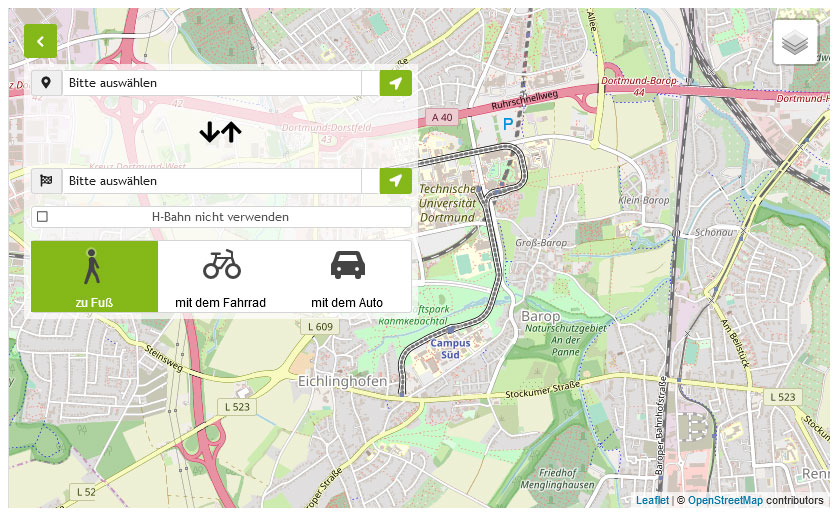P1: MED-Learn
Determination of the minimum effective dose from high-dimensional expression data with statistical learning methods
In project P1 (Determination of the minimum effective dose from high-dimensional expression data with statistical learning methods), we investigate dose-response curves in which the response variable is given by the viability of cells or by a molecular variable, e.g. the expression of a specific gene.
A central task in the analysis of dose-response curves in toxicology is the determination of a minimum concentration at which the response variable exceeds a given threshold value, also called an `alert’. In an extensive literature review in the field of toxicology performed by the RTG (Kappenberg et al., 2023a) we found that statistical testing of the analysed concentrations remains the most frequently used approach to determine the lowest effective concentration. However, fitting dose-response curves represents a superior approach, since also values between tested concentrations can be obtained as alerts.
In various research projects in the first phase of the RTG, we have fitted dose-response curves (see, e.g., Brecklinghaus et al., 2022). For cytotoxicity assays, the sigmoidal and monotonous 4pLL and the non-monotonous Brain-Cousens model are established approaches. For other assays, fits that are more flexible were obtained using the MCP-Mod (Multiple Comparison Procedure and Modelling) approach, which combines a relevance testing and a model selection step. The resulting alerts were used as features to build classifiers that distinguish between hepatotoxic and non-hepatotoxic compounds. In Brecklinghaus et al. (2022), adding such features obtained from the Nile Red assay, which measures lipid content, resulted in improved classification accuracy in comparison to considering cytotoxicity alone.
Increasing the complexity, we added high-dimensional gene expression measurements as response variables for fitting dose-response curves and introduced several intuitive methods to reduce the resulting data to interpretable variables (Stolte et al., 2023). Different statistical learning algorithms were evaluated as classification methods between 39 hepatotoxic and 23 non-hepatotoxic compounds. It was shown that the simultaneous use of data from cytotoxicity assays and from gene expression variables summarised by specific techniques has a synergistic effect and leads to a better prediction of hepatotoxicity than both sets of variables individually. This project will be extended, using more compounds, more assays, and additional statistical learning algorithms.
As a next step, we will estimate alerts not only on a gene-wise level, but also for entire sets of genes. Genes in a functional context can be considered as a group (e.g. Gene Ontology groups) and the minimum effective dose can be determined for the entire set. Initial ideas tested in the first phase of the RTG, namely to either determine the lowest concentration at which at least one gene exceeds the threshold, or to combine all alert values obtained for single genes of the set to one central value, were not suitable. Therefore, per gene set, we will estimate the concentration at which a significant proportion of alerts are observed, in an enrichment framework as established in gene group testing, e.g. in differential expression studies.
Further, as a new project, similar methods will be applied to data from rats, to predict hepatotoxicity of food relevant compounds. In previous projects, human data was used for predicting hepatotoxicity of therapeutic compounds. For human data, with the exception of very few compounds, only one-sided knowledge about the toxicity of plasma concentrations in vivo is available, which means that – depending on the therapeutic use - either a toxic or a non-toxic dose range is known, but it remains elusive if effects also occur at lower or higher concentrations, respectively. For rats, in contrast, two-sided knowledge is available, which means that usually both non-toxic and toxic dose ranges are known from dose dependent toxicity studies. In this project, the different types of toxicity assays will be performed in primary rat hepatocytes and in two cell lines. Based on alerts of the fitted concentration-response curves, the lowest concentration causing a positive effect in vitro will be determined.
Referenzen
- Kappenberg F, Duda JC, Schürmeyer L, Gül O, Brecklinghaus T, Hengstler JG, Rahnenführer J (2023a). Guidance for statistical design and analysis of toxicological dose–response experiments, based on a comprehensive literature review. Archives of Toxicology 97(10), 2741-2761. doi: 10.1007/s00204-023-03561-w
- Stolte M, Albrecht W, Brecklinghaus T, Gründler L, Chen P, Hengstler JG, Kappenberg F, Rahnenführer J (2023). Classification of hepatotoxicity of compounds based on cytotoxicity assays is improved by additional interpretable summaries of high-dimensional gene expression. Computational Toxicology 28:100288. doi: 10.1016/j.comtox.2023.100288
- Brecklinghaus T, Albrecht W, Kappenberg F, Duda J, …, Rahnenführer J, Hengstler JG (2022). The hepatocyte export carrier inhibition assay improves the separation of hepatotoxic from non-hepatotoxic compounds. Chemico-Biological Interactions 351:109728. doi: 10.1016/j.cbi.2021.109728




